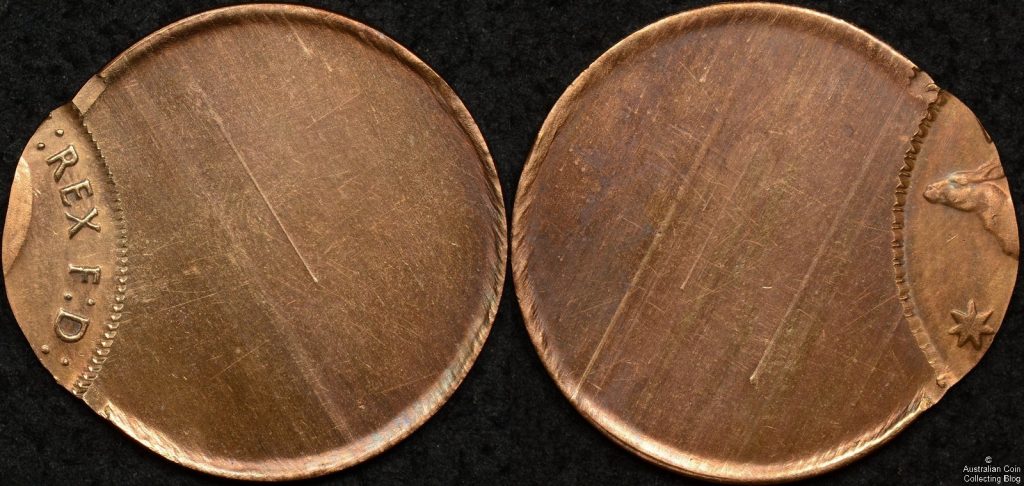Grossly off-centre coins like the one shown above are particularly sought after by collectors This coin is about 80% off centre and shows design elements that identify it as a penny of George VI. Often these sorts of radically off centre errors show no signs of the collar die being present at all. For those new to the error game, the collar die (when making round coins) is a ring shaped die that fits around the coin blank when it is struck. It serves two main purposes, the first is to constrain the flow of the coin blank radially and ensure that the coins struck are the correct size. Secondly, it applies some finish to the edge of the coin, this can be a plain smooth finish (like a 1c or 2c), a reeded finish (like a 20c or a 10c), or even an interrupted reeded edge (like a dollar or two dollar coin). In the case of our off centre error the collar die was certainly present but obviously did not encircle the coin blank when it was struck. So how do we know the collar die was present when this error was formed? See the image below
Referring the image above, the arrows labelled 1 point to a flat shelf like feature on either side of the struck portion of the coin. This is evidence that the coin was struck against the collar die, removing the raised rim that is present around the rest of the coin. It’s important to realise that the raised rim was applied to the coin blank BEFORE it was struck, and was removed WHEN It was struck. Obviously the raised rim was flattened by something, and in this case it was the collar die.
The arrows labelled 2 on the above image show an interesting feature that shows that the collar die, while present, was not performing one of it’s key tasks. The small crenellated features you can see are the denticles you’d expect to see around the edge of a George VI penny. Given that one of the roles of the collar die is to restrict radial metal flow of the coin and in the case of our error was not in place properly, clearly radial metal flow is NOT restricted. So, what should be nicely formed rim denticles are actual smeared sloping ramp like features, formed when the metal flowed outwards rather than filling the denticle features on the obverse die.
For the new or experienced error collector it can be tough obtaining an Australian error like this off-centre penny, their scarcity and desirability makes them one of the more expensive errors you can find. For the collector on a budget who wants an error of this type then an off-centre US penny can be an affordable way of adding one to a collection. For the collector who has to have an Australian example of the type, head over to the Purple Penny website where one is in stock right now.



